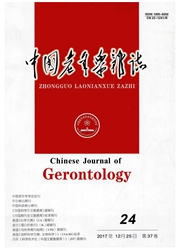

 中文摘要:
中文摘要:
目的探讨KLF14基因过表达对小鼠肝癌细胞Hepa1-6胰岛素抵抗的影响。方法实时荧光定量PCR(RT-QPCR)检测KLF14基因m RNA在健康C57BL/6J小鼠各组织的表达分布情况;构建小鼠KLF14基因重组真核表达质粒p IRES2-EGFP-KLF14并转染Hepa1-6细胞,RT-PCR法检测KLF14基因m RNA的表达;Western印迹检测KLF14及p-AKT蛋白水平的表达。结果成功构建p IRES2-EGFP-KLF14质粒;转染肝癌细胞48 h后,KLF14 m RNA和蛋白水平明显高于对照组和空载组(P<0.01);转录水平上KLF14基因在小鼠体内普遍表达,其m RNA相对表达量由高到低依次为心脏、骨骼肌、肝脏、脂肪、小肠、肾脏、脑、肺、胃、脾、附睾;非转染组给予血清干预后,正常人血清处理组和糖尿病病人血清处理组无明显差异;而转染组给予血清干预后,糖尿病病人血清处理组p-AKT表达量较正常人血清处理组明显增加;在胰岛素刺激情况下,无论转染组或非转染组,给予PI3K抑制剂LY294002后,p-AKT表达受抑。结论 KLF14在C57BL/6J小鼠多种组织均有表达,提示其可能在维持正常生理功能中发挥一定作用;KLF14基因过表达可促进AKT的活化,并且其增加胰岛素敏感性的作用在糖尿病状态下较正常人更为明显。
 英文摘要:
英文摘要:
Objective To investigate the role of KLF14 overexpression on insulin resistance in Hepa1-6 cell.Methods The tissue distribution of KLF14 in healthy C57/6J mice was detected by real-time quantitative PCR(RT-PCR).Expression vector for pIRES2-EGFP-KLF14 gene was constructed and transfected into Hepa1-6 cell.The mRNA level of KLF14 was determined by RT-QPCR;KLF14 and p-AKT protein levels were measured by Western blot.Results The recombinant plasmid pIRES2-EGFP-KLF14 was constructed successfully.In transfected hepa1-6 cell,KLF14 mRNA and protein were significantly higher than those of control and blank cells after 48 h(P<0.01).The KLF14 gene was ubiquitously in mice.The relative mRNA expression level of KLF14 from high to low in order was heart,muscle,liver,fat, intestine,kidney,brain,lung,stomach,speech and epididymis.After treated with serum intervention,there was no significant difference be-tween normal and patient groups without transfection;whereas the p-AKT expression in the patient group with transfection was significantly in-creased compared with that in normal group.In insulin-stimulated conditions,the p-AKT expression was inhibited after treated with PI3K in-hibitor LY294002 regardless of transfection or not.Conclusions There is an extensive expression of KLF14 in various tissues of C57BL/6J mice,indicating that KLF14 might play a role in maintaining normal physiological function;KLF14 gene overexpression could promote the ac-tivation of AKT,and its effects in increasing insulin sensitivity in diabetics is more distinct than normal people.
 同期刊论文项目
同期刊论文项目
 同项目期刊论文
同项目期刊论文
 期刊信息
期刊信息
